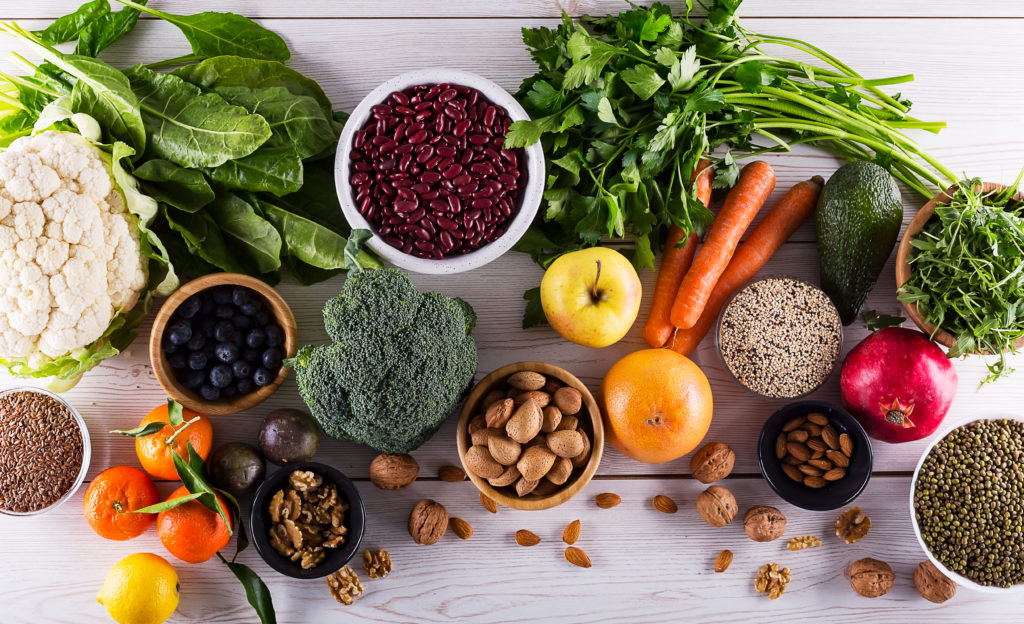Have you thought about going on some sort of crazy ass detox where you drink some magic potion of teas, honey, and witches dust? Ok, maybe I’m exaggerating a little bit on that but for the most part I’m not a fan of people trying this. Here’s what happens (it may sound familiar to you). You go on this extremely low calorie and low NUTRIENT diet for days or weeks, you feel like you just had a week long bender, you lose a lot of “weight” (where a good amount of it is lean tissue), and then once you are done you gorge yourself into a food coma and gain most, all, or even more of the weight back!
I have a better solution for you! Instead try an elimination diet and get your gut to reset, eat foods that will nourish your body, and don’t even worry about counting calories!!
So, here is an elimination diet protocol to help you understand your body more. This is a way to take out major allergen foods and slowly reintroduce them after 30 days. So you may not have to say goodbye to one of your favorite foods forever, just goodbye for now to see what the issue is and help heal your gut. This is a great way to get more in tune with your body, as well as eat a lot of whole foods and get creative with adding them into your diet. Now, this is NOT a weight loss diet, but it is likely that you will lose weight from taking away major food allergens and decreasing inflammation. I’m not going to give you a calorie range here, simply eat real food! Do your best to stay the course and if you go off track for one meal or bite, just own it and move on!
Here’s the thing – I prefer you stick to this 100%, but we all mess up every now and then. For example, it’s very likely that in the first few days you eat something that you forgot had nuts in it or had a sauce with honey. That’s okay. I don’t need you to go back to day one; just keep on moving. If you accidentally eat gluten on day 20 and feel like death, then you know that probably caused a reaction. Get back to the plan and take a note of that body response. But, if you find yourself constantly struggling to do this and eating what you’re not supposed to, then maybe it’s not for you. And that’s okay too.
You may want to ease into this and simply start taking out processed foods, alcohol, and sugars before doing this, but if you are a hit-the-ground-running type of person, then have at it! Important: stop taking any NSAIDs if possible while on this and do not do this if you are taking antibiotics, as they will do a number on your gut all by themselves.
The 30 Day Belly Bounce Back
Day 1 – 30 – Remove the following foods:
- Carbs: gluten, beans, and legumes.
- Processed meats: hot dogs, bacon, etc.
- High mercury fish: tuna, swordfish, lobster, etc.
- Soy and soybeans.
- Sweeteners: including natural sweeteners (sugar, honey, agave, corn syrup, brown sugar, etc.) and artificial sweeteners (aspartame, sorbitol, neotame, saccharine, etc.). Basically if it adds sweetness and isn’t fruit, don’t have it.
- Additives: MSG, dyes, etc. In fact, it’s a good idea to never eat these.
- The Hateful Eight. These are seed oils: corn, cottonseed, canola, grape, sunflower, sesame, soybean, and safflower. It’s also a good idea to never have these, as they cause too much Omega 6 to 3 ratio and can cause inflammation with increased risk of IBS, obesity, heart disease, and more.
- Non-Water Beverages: soda, juices, energy drinks, alcohol, milk, diet soda, caffeine. If you absolutely need your caffeine, you can have a little coffee or organic tea, but try to taper off each week. For example, if you usually have three cups of coffee per day, do that for the first week then try to cut back to two cups in week two, one cup in week three, and zero cups for the remainder of the time. Or, you can get down to half a cup when you really need it, like before a workout or when needing a quick shot in the ass of productivity.
- Eggs: yes, eggs are good for you but can cause a reaction in many people.
- Nuts: nuts are another one that has a place in a healthy eating plan but can often cause issues with some people. Nuts can cause bloating, constipation, give you the runs, and other GI issues. Taking these out for a certain period of time can help. Often, people who go on a Keto or Paleo diet, have some GI issues and taking out nuts and nut butters, milks, etc. can alleviate a lot of issues. Quick note on nut butters for if/when you go back to them: I love them oh so much but be careful, as multiple spoonful’s can quickly become a calorie bomb! They have a high amount of fat and fat has nine calories per gram vs. protein or carbs that have only four calories per gram.
- Dairy: people often have an issue with dairy because of the lactose. When you reintroduce dairy, remember that not all dairy is created equal. For example, ghee or clarified butter has much lower levels of lactose and casein.
- Prebiotic Supplements & Food: these are good for you, but prebiotics can cause issues for people with IBS and make symptoms worse. Rapid fermentation can cause gas, diarrhea, bloating, and constipation. If you have SIBO (small intestinal bacterial overgrowth) or FODMAP (fermentable oligosaccharides, disaccharides, monosaccharides, and polyols) intolerance, then stay away as well. Examples of prebiotic foods include leeks, asparagus, artichokes, onions, garlic, corn, banana, oats, and chicory root.
- Raw Veggies… kind of: I hate even writing this because I believe vegetables have a great place in our eating plan. But if you have GI issues, raw vegetables can be harder to digest than cooked veggies. Now, do not read this and think, “Joey said not to eat vegetables.” On the contrary, just be aware that steaming vegetables, adding them to a pressure cooker, using the oven, etc. might help your gut a little. If you feel great after eating raw veggies, then go on with your bad self!
- If you have reflux: remove any spicy food, chocolate, and red sauces like marinara.
Alright, I know what you’re all probably thinking right now, “So what can I eat??” Fair question. Here’s what I want you eating for the first 30 days of the gut cleans:
- Cooked veggies. You can have raw vegetables if you know you can handle them well. Some people may handle leafy greens better than something denser, like broccoli. beets, carrots, green peas, parsnips
- Meat. Preferably organic and grass fed. NO processed meats.
- Fruit.
- Gluten-free grains, i.e. quinoa, quinoa pasta, white rice, brown rice, wild rice, oats.
- Tubers, i.e. potatoes, yams
- Fats: avocados, olives, extra virgin olive oil (not used for cooking), avocado oil (can be used for cooking).
- Any food product that has all good ingredients and none of the ones on the remove list. A lot of food companies have gotten really good about making specific, diet-friendly products.
Before you start thinking you’re going to be eating boring, bland food for thirty days. Remember you can easily yummify your meals with herbs and spices. Ginger, peppermint, parsley, dandelion greens, and basil are a great way to add some flavor. There are also a lot of spices that can aid with certain tummy issues. If you’re constipated, try some ginger, cayenne, fennel, cumin, or turmeric. Or if you have diarrhea, peppermint, turmeric, or nutmeg can help. Other herbs just good for general health include thyme, chamomile (chamomile tea), rosemary, cardamon, cumin, oregano, coriander, licorice root, and slippery elm. Also, bitter foods are a great way to increase the natural process of digestive enzymes. Add in dandelion greens (or tea), arugula, endive, dill, Jerusalem artichokes, kale, saffron, pure cocoa, and citrus fruits, like lemon.
Okay, so you might be feeling super overwhelmed right now. I get it! But remember, this book is ultimately about doing what is best for you and not shaming you into anything. If all of the above feels impossible, just do what you can. Or again, just focus on removing processed foods and eating more whole foods. The main goal is to start reading the labels on everything and being better informed on what’s in the food you’re eating. Ultimately, I would love for you to get to the point where none of the food you’re eating even has a label!
I want to point out that a lot of elimination diets give you calorie restrictions as well. I’m not going to do that. Instead, I want you to focus on removing the foods listed above and eating as much as you want of the allowable foods. And if you can, try to diversify your food as much as possible instead of eating the same things every day. Variety is great for nutrient diversity and microbiome health.
Again, the goal of this diet isn’t to lose weight, but you likely will shed a few pounds due to the increase in fiber and nutrients and decrease in inflammation. If you’d rather maintain or gain weight, then be sure to load up on approved carbs, healthy fats, and proteins. Bottom line – make this your own and remember you are eliminating foods in order to GAIN better health.
A note on cost: It is a sad fact that it is cheaper to eat unhealthy food. Processed foods often cost much less than whole foods and your bank account may feel that when you start making the switch. Think of this as an investment in you and your health. You may be spending more on the frontend, but you’ll be saving A LOT on the backend… in both dollars and quality of life. Heart disease, diabetes, obesity, and other health issues end up costing a lot in doctors visits, medications, and more.
After Day 30 – Begin Reintroducing Foods
After 30 days, you will start to reintroduce one food that you removed every three days. You’ll eat a few servings of that food on the first day of the three days, and don’t have any more of that food for day two and three. Record how you feel each day. If you don’t experience any symptoms, you can keep that food in your eating plan. If you have any kind of reaction, then don’t eat that food again.
Day 31-33: Eggs. Remember, have 2-3 servings of eggs on day 31 and no eggs on day 32 and 33. Record your symptoms.
Day 34-36: Gluten and/or wheat. You can skip this category if you want to. Remember there are lots of options for breads and pastas that don’t have gluten, like potato bread, cassava, and others.
Day 37-39 Beans and legumes. Now, you may have heard about “anti-nutrients” in certain foods like beans and legumes. I don’t want this book to be confusing so here’s the bottom line – yes, anti-nutrients are a real thing but they aren’t a concern for most people because you typically cook them out of your food. The anti-nutrients present in beans and legumes are called lectins. Lectins have been shown to potentially decrease the absorption of calcium, iron, phosphorus, and zinc. But again, most lectins are removed through boiling, soaking, sprouting, or pressure cooking. There is also evidence that some lectins could be beneficial to your health and different cancer therapies. There are even studies on vegetarians who eat a high amount of anti-nutrients that don’t show a deficiency in iron and zinc. So it is hypothesized that the gut gets used to them and allows for more absorption of these minerals over time. Basically, diversity is key. If you eat a wide variety of foods, you’ll get all the nutrients you need and won’t have anything to worry about. But if you are still concerned about anti-nutrients, then pressure cook your beans on high for anywhere from 25 to 40 minutes. You can also buy beans in a can that were precooked in a pressure cooker.
Day 40-42: Nuts. Now, back to the anti-nutrient thing. Sorry, I have to cover my bases. The anti-nutrients found in nuts are oxalates and phytates. But simply soaking them in water and salt or lemon juice overnight then rinsing them in the morning can take care of a lot of the anti-nutrients. Honestly, my favorite is soaked almonds with some sea salt on them. They are a little chewy and delicious! You can even toss them in the oven afterwards for a good crunch if you want. Many companies now sell pre-soaked and dried nuts.
Day 43-45: Raw veggies.If you didn’t remove raw veggies, then skip this and move onto the next category.
Day 47-49: Caffeine/Coffee. If you cut or decreased your caffeine intake, the same rules apply as when you removed it – slowly increase the amount you drink. So I would start with just one cup on day 47. If you don’t have a reaction, you can slowly increase over the next couple weeks.
Day 50-52: Dairy.Ahhh the dairy conundrum. You can opt to keep dairy out of your diet as long as you are getting enough calcium, vitamin D, and other nutrients found in dairy from other sources. Again, most people who have an issue with dairy have a problem with the lactose in the dairy. In fact, about 75% of the world’s population is lactose intolerant, meaning they don’t have enough of the enzyme lactase, which is produced in your gut to break down lactose. Other people avoid dairy because of the hormones injected in the animals or because they believe the food the animals eat (which is usually awful) is then passed to us. I have to say I don’t disagree with those concerns. There is a lot of research on the need to have dairy and, while I personally don’t think we need it, that doesn’t mean you can’t have it. But here’s my advice – if you are going to consume dairy, make sure it is organic, hormone-free, and from a reputable source.
And like so many other things, not all dairy is created equal. For example, milk has much more lactose than butter which has almost none. So if you are concerned about lactose but you still want to have dairy, here are your dairy go-to’s:
- Butter or clarified butter (ghee) has extremely low levels of lactose or no lactose.
- Aged cheese such as cheddar, Swiss, or parmesan, as the aging process further breaks down the lactose.
- Probiotic yogurt has live bacteria in it which is able to break down lactose much easier. Studies show that people who have issues with milk are much less likely to have issues with yogurt. Look for a yogurt that says “probiotic,” meaning there are live cultures. The pasteurized versions do not have live cultures. Greek yogurt (shout out to my in-laws and 50% of my son) has lower lactose, as the straining removes the whey and in turn brings down the lactose.
- Dairy protein powder often has little to no lactose. Look for the isolate which has the lowest level of lactose.
Track your symptoms after eating dairy just like the other foods, but also be aware when you add a source that has higher lactose content and record how you feel. If you cut out dairy altogether, here are some foods with a high amount of calcium and other nutrients typically found in dairy: sardines, figs, Bok Choy, kale, seaweed, almonds, oranges, sesame seeds, oatmeal, and collard greens.
Once you complete all of the above, you should have a good sense for what foods cause poor reactions. From there, it’s up to you how often you eat those foods. If you think the food is worth the stomach issues, then at least you are making an informed and intentional decision. Just be smart about it.
To your health,
Joey Thurman @joeythurmanfit IG, FB, Twitter, TikTok
If you like free things my YouTube: youtube.com/joeythurmanfitness


